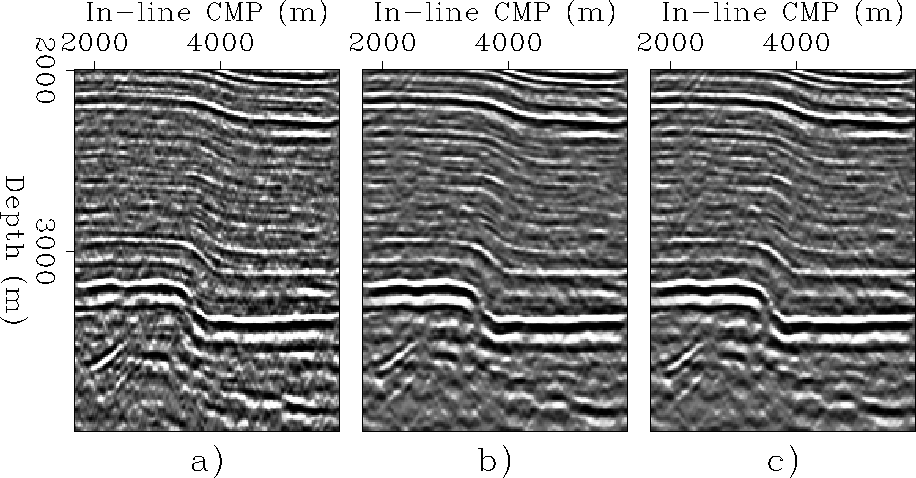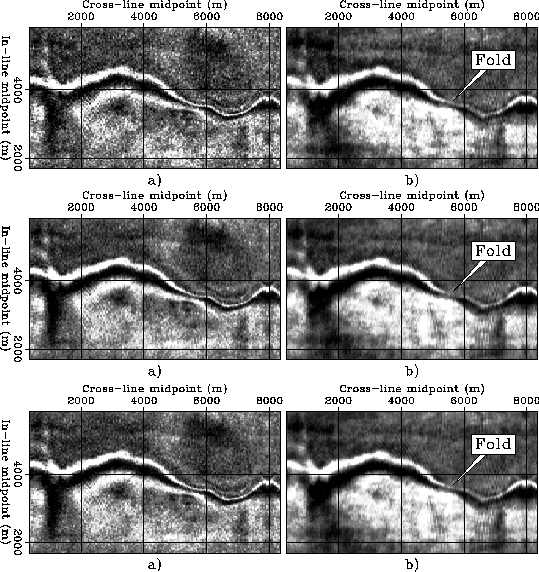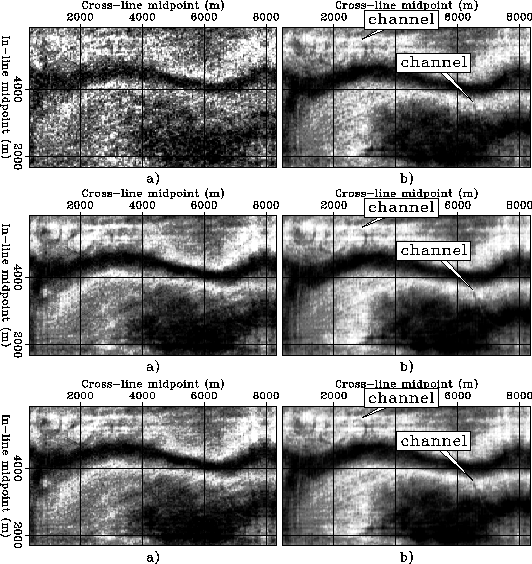 |
Figure 5 Images for wide reflection angle at constant cross-line location (CMPY=5.775 km). The images were obtained after geometry regularization with: a) normalization, b) regularization, c) AMO regularization.
 |
Figure 5 compares one line extracted at CMPY=5.775 km, for a wide reflection angle. As before, panel (a) displays the result obtained using normalization, panel (b) displays the result obtained using regularization, and panel (c) displays the result obtained using AMO regularization. The image obtained by normalization is more noisy than the ones obtained by using regularization. The fold is slightly better imaged in the results using AMO regularization (panel c). These differences are confirmed in the depth slices shown in Figure 6 shows two depth slices taken at the reservoir level (depth 3.27 km) obtained by migration after geometry regularization with: normalization (top), regularization (middle) AMO regularization (bottom). Panels (a) show the images for a narrow reflection angle, panels (b) show the images for a wide reflection angle. The depth slices obtained using normalization are noisier than the ones obtained using regularization. The dipping event (marked as Fold in the figures) is better imaged in both the normalization results and in the AMO regularization results than in the regularization results.
There are also other subtle differences between the two images obtained with regularization. Only a joint analysis of the seismic images with the well logs from the existing well could determine if they are significant for the accuracy of reservoir characterization.
 |
Figure 7 shifts our attention to a shallower level, where there are no obvious structural features, but meandering channels are visible. The depth slices were taken at a depth of 1.91 km. One channel is clearly visible in the upper left corner of the images, while another one is (less clearly) visible around the lower right corner of the images. As for the previous figures, the slices on the left are taken for a narrow reflection angle, the slices on the right are taken for a wide reflection angle. The images obtained using normalization are noisier and show more clearly the oblique acquisition footprints. In the narrow angle image, the noise is so overwhelming that no channels are visible. The two regularization results are comparable for narrow angles. At wider angle the AMO regularization image is slightly better focused. Subtle differences are noticeable in the imaging of both channels, where indicated by the arrows. Although the images of the upper channel are unfortunately affected by edge effects caused by the migration.
 |